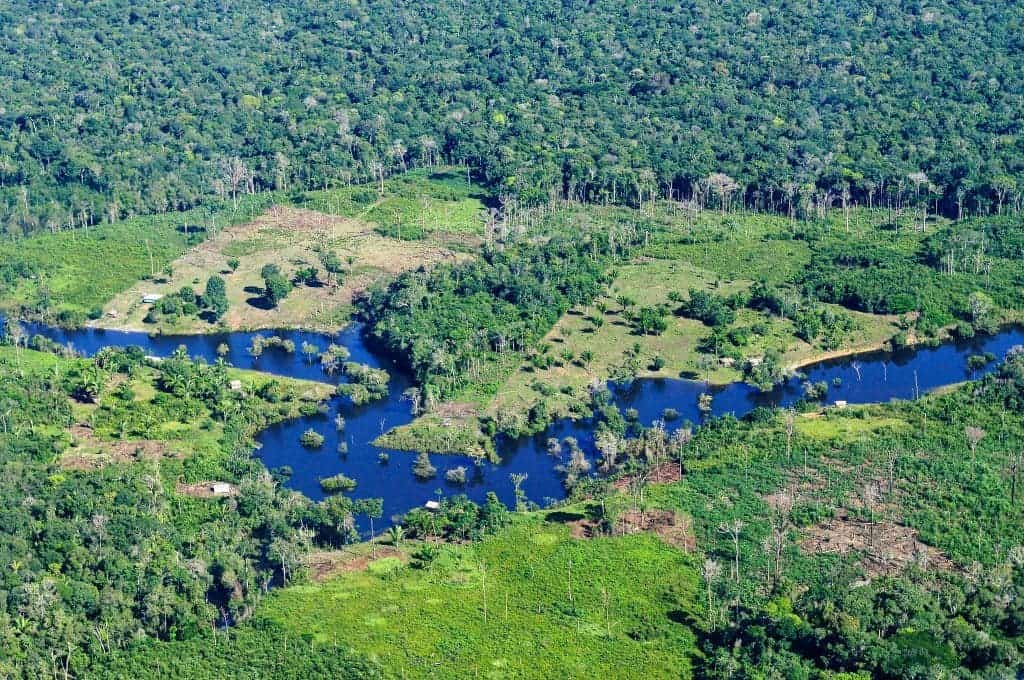Deforestation rates in Latin America are significantly lower in territories managed by indigenous and tribal groups that have been recognized with territorial rights, according to a report by the United Nations. The report suggests that indigenous communities are important wardens of local forests and improving the tenure security of these territories would be an effective and efficient way of reducing deforestation.

The report by the Food and Agriculture Organization of the UN (FAO) is based on a review of more than 300 studies published in the last two decades. It reveals for the first time the extent to which science has shown that indigenous and tribal people have been the best guardians of the forests across Latin America over the years.
“Indigenous and tribal peoples and the forests in their territories play vital roles in global and regional climate action and in fighting poverty, hunger, and malnutrition. Their territories contain about one-third of all the carbon stored in the forests of Latin America,” FAO’s representative for Latin America, Julio Berdegué, said in a statement
Over 400 million hectares of land are currently occupied by indigenous people in Latin America. But governments have formally recognized property or usufruct rights on only 269 million hectares. Coincidentally, these are the ones to have registered the best results regarding deforestation rates – especially in countries such as Bolivia, Brazil, Peru, and Colombia.
One study included in the report found that from 2006 to 2012, forests managed by indigenous communities in Peru reduced deforestation by twice as much as other protected areas. Another study on the Amazon basin found indigenous territories lost 0.3% of the carbon in their forests between 2006 and 2016, compared to the 3.6% of non-protected land.
“Almost half of the intact forests in the Amazon Basin are in indigenous territories, Myrna Cunningham, president of Fund for the Development of Indigenous Peoples of Latin America and the Caribbean (FILAC), said in a statement. “The evidence of their vital role in forest protection is crystal clear. Their voice and vision should be taken into account in global initiatives and frameworks.”
FAO urged Latin American governments to take action, firstly by recognizing communities with territorial rights. The costs of doing so are 5 to 42 times lower than the average costs of avoided greenhouse gas emissions through fossil carbon capture and storage for both coal and gas-fired power plants. Only $6 are needed to title a hectare of land in Colombia, for example.
The report also suggested reinforcing programs to compensate indigenous and tribal communities for their contributions to climate stability and nature conservation. Paying them for the environmental services they provide has reduced deforestation in countries such as Ecuador, Mexico, and Peru, as they use the funds to finance infrastructure, services, and value chains.
With generations of experience protecting nature, these communities have strong track records of guarding the forest. They favor smaller-scale and more diverse farming, taking less from the land. Unfortunately, they are also under constant threat from climate change and the expansion of beef and fossil fuel production as well as mining and logging.
These threats have led to growing forest loss and conflict. Annual deforestation rates in Brazil’s indigenous territories rose from 10,337 hectares in 2017 to 42,697 hectares in 2019. Between 2000 and 2016 the area of large undisturbed forests in indigenous territories fell by 20% in Bolivia, 30% in Honduras, 42% in Nicaragua, and 59% in Paraguay.









